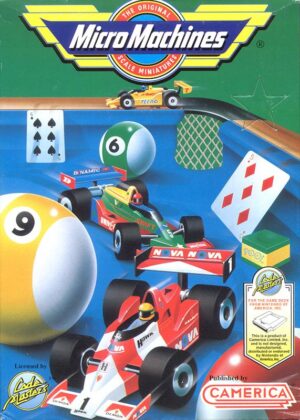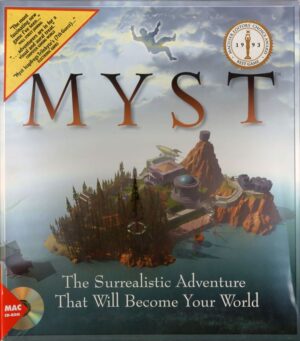Retro Replay Review
Gameplay
Shipwreck combines hands-on problem solving with light adventure elements, challenging young players to apply principles of electricity and magnetism as they progress. Each segment of the game tasks children with repairing circuits, calibrating generators, and constructing simple motors from collected materials. The intuitive drag-and-drop interface ensures that 8-year-olds can easily assemble components without getting frustrated by cumbersome controls.
(HEY YOU!! We hope you enjoy! We try not to run ads. So basically, this is a very expensive hobby running this site. Please consider joining us for updates, forums, and more. Network w/ us to make some cash or friends while retro gaming, and you can win some free retro games for posting. Okay, carry on 👍)
The game unfolds on a tropically themed island, divided into distinct zones such as the wrecked boat, a hidden jungle workshop, and an abandoned research lab. Players must explore these locations to gather wiring, coils, magnets, and batteries while deciphering Ohm’s puzzles, which serve as both obstacles and educational checkpoints. As children solve one circuit challenge, they unlock new areas and mini-experiments that gradually increase in difficulty.
Quizzes and interactive diagrams appear between scenes, reinforcing terminology like “voltage,” “current,” and “resistance.” These pop-up lessons are woven seamlessly into gameplay, so that theory immediately translates into action. Parents and teachers can track progress, making Shipwreck not only fun but also a practical classroom companion.
While the core loop of finding parts and fixing machines repeats, subtle variations—such as altering the polarity of magnets or rerouting power through alternative paths—keep the experience fresh. The combination of exploration, puzzle solving, and built-in tutorials creates a balanced learning curve that feels more like play than study.
Graphics
Visually, Shipwreck embraces a colorful, cartoon-inspired aesthetic that appeals to its young audience. The island’s lush greenery contrasts nicely with the broken-down metallic components that kids will manipulate. Everything is rendered with bold outlines and simplified shading, ensuring clarity even on smaller screens or lower-end hardware.
Component icons—batteries, wires, switches—are drawn with crisp lines and labeled in bright, legible text, reinforcing word/object association. Animations are smooth but not overly elaborate, keeping the focus on educational tasks rather than flashy effects. When a circuit activates, sparks of light travel along wires in a clear, satisfying way, giving immediate visual feedback on success or failure.
The user interface places menus and tooltips at the edges of the screen, leaving ample room for island exploration. Interactive hotspots glow gently when hover-able, easing navigation for younger players. Cutscenes featuring Ohm and narrative prompts are skippable, allowing returning players to jump straight back into hands-on learning.
Overall, the graphics serve instruction first, but do so with charming art direction that avoids feeling sterile. Shipwreck’s visual design strikes a fine balance between educational clarity and engaging, storybook presentation.
Story
Shipwreck thrusts the player into the role of a marooned explorer whose only hope of escape is a battered motorboat. The antagonist, a mischievous character named Ohm, hides crucial electrical components around the island, taunting players with riddles about circuits and magnetic fields. This playful villain provides a narrative thread that motivates continued progress through educational puzzles.
Dialogue is kept light and humorous, with Ohm’s quips appearing in speech balloons overlaid on the scene. Friendly animal sidekicks—such as a curious parrot and an inventive hermit crab—offer hints and occasional comic relief. These characters break up the technical instructions and add personality, making the learning journey feel like an adventure rather than a lecture.
The progression of the story is paced by milestone achievements: reactivating the island’s radio tower, restoring power to a lighthouse, and finally rebuilding the motorboat’s engine. Each milestone doubles as a real-world concept demonstration, tying narrative goals directly to scientific principles. Children come away feeling accomplished both in the game world and in their grasp of electricity concepts.
Although the narrative is relatively straightforward, it is well-suited to the game’s educational aims. The story provides just enough context to make experiments meaningful, ensuring that lessons in voltage and magnetism resonate beyond textbook definitions.
Overall Experience
Shipwreck delivers a compelling blend of adventure and education, making it an excellent choice for parents seeking interactive STEM content. The clear progression system and built-in tutorials mean that kids can play independently, while progress tracking offers educators valuable insights into individual strengths and areas for improvement.
The game’s balance of exploration, puzzle solving, and narrative keeps young learners engaged for sessions lasting anywhere from 15 minutes to an hour. Replayable mini-experiments and optional bonus challenges extend playtime and encourage mastery of core concepts. For families without formal physics lessons at home, Shipwreck provides a structured yet flexible learning environment.
Minor quibbles include occasional menu text that might be small on tablets without zoom features, and a handful of puzzles that children may need parental guidance to solve. However, these moments often foster collaborative problem-solving, turning potential frustrations into teaching opportunities.
In sum, Shipwreck stands out as a polished, child-friendly title that successfully transforms the fundamentals of electricity and magnetism into an engaging island adventure. Its approachable graphics, cohesive story, and thoughtfully designed gameplay make it a valuable addition to any educational game library.
 Retro Replay Retro Replay gaming reviews, news, emulation, geek stuff and more!
Retro Replay Retro Replay gaming reviews, news, emulation, geek stuff and more!




Reviews
There are no reviews yet.